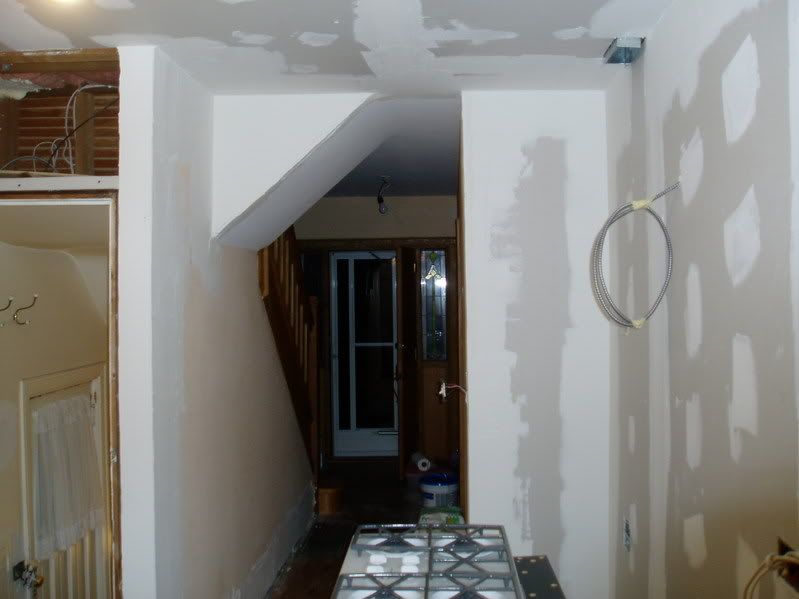Speaking as a guy who has drywalled more walls than I want to remember:
The advice to cut it back to the adjacent studs is correct.
Use a carpenter's square to make it neat.
Screw, don't nail the patch drywall in the hole.
Take a utility knife and cut the edges of the adjacent drywall and the patch piece to a V shape.
Apply the mesh tape.
Use drywall compond (I have never in 20 some odd years of doing this heard it refered to as "spackle")
First you use a 6" drywall compound knife to cover the mesh.
Let it dry.
When dry, take a putty knife and raze any high spots.
Apply another coat of compound, slightly larger than the last coat.
When that drys, use a piece of 80 grit sandpaper to smooth it up, doens't have to be 100%.
Apply another coat of compound, larger in width than the last coat. By now, you are probably covering the whole patch, so beit. You may want to use a 12" drywall knife which will cover it beautifully.
When dry, use 80 grit to sand to good. Then use compound again to touch up any divets you see.
80 grit again.
Now here's my own trick. Take a bare light bulb and bring it up to the compound. This will hilight any imperfections that you will see later in a different light.
80 grit.
Finish with a 120 grit sand to the entire area using the light.
Oh, and one other thing, always vaccuum up the dust between coats and before you primer.
Primer with latex or oil primer (if your adjacent walls are oil, you must use oil primer)
Once primered, do the light trick again. Touch up any imperfections you see.
Primer again.
Paint.
You'll never see it, trust me.
My kitchen at the moment:
All framing, wiring, plumbing, insulating, heated floors, drywall, tiling, windows, etc. by yours truly.


Like my stove?